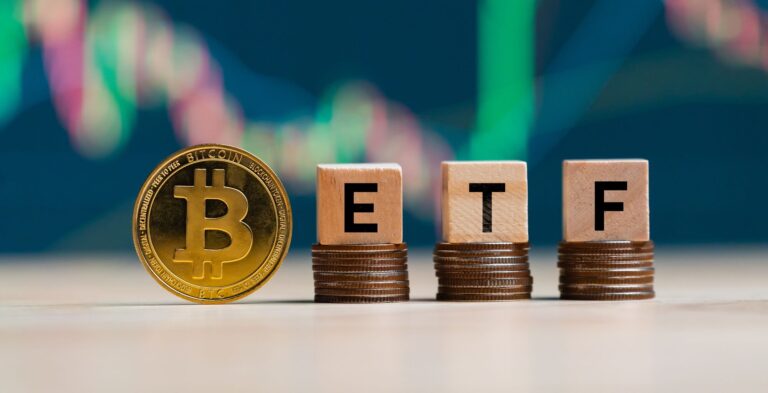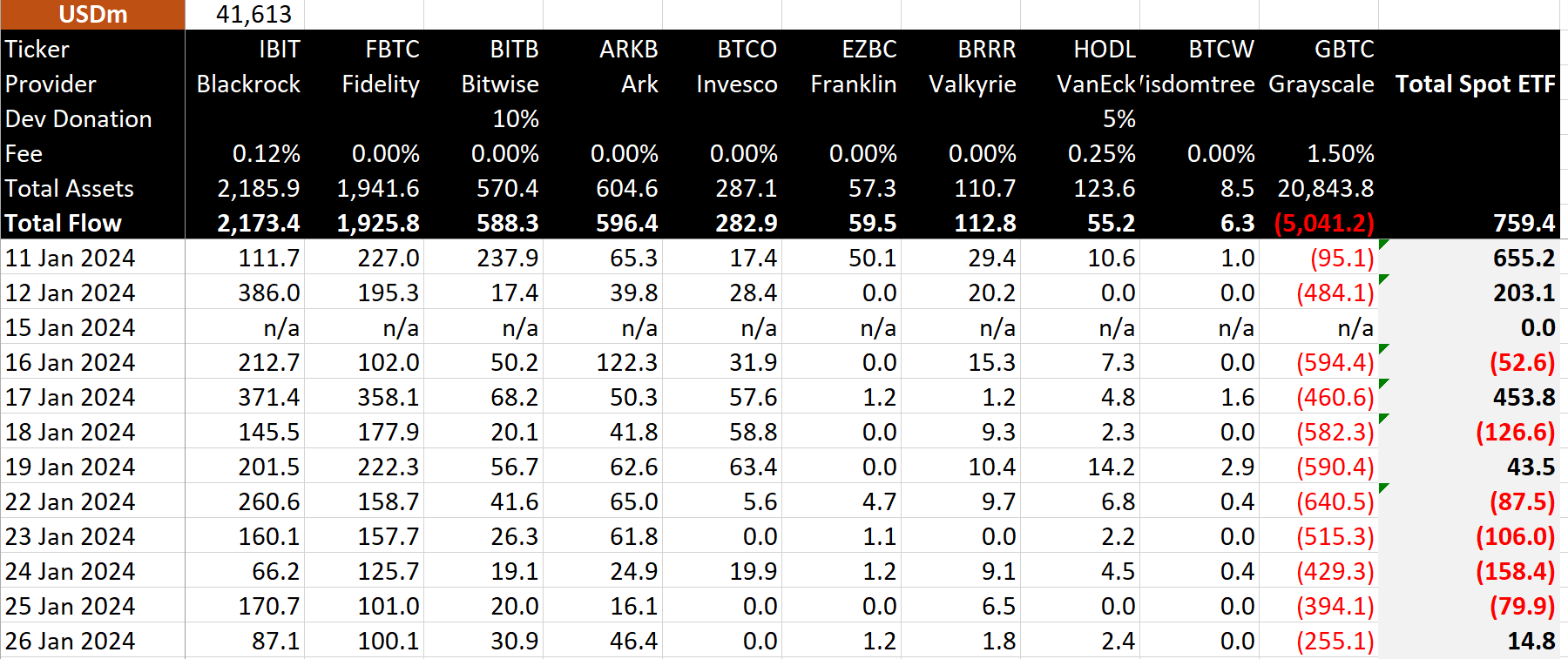The recently approved spot Bitcoin ETFs have created quite a buzz. Already, two of the new funds have nearly $2 billion in assets under management and trading volumes are breaking records. Let's take a look at the fund flows since the ETFs were approved two weeks ago.
For half a year, various product providers sought approval for the first spot-based Bitcoin ETF. Financial giants like BlackRock, Fidelity and others filed dozens of amendments with the U.S. Securities and Exchange Commission (SEC). On January 10th, it finally happened. Due to the clear court ruling in Grayscale vs SEC, the commissioners had no choice but to approve the Bitcoin ETFs. Just over two weeks later, we can look back on $14 billion in trading volume and inflows in the high hundreds of millions.
BlackRock vs. Fidelity: Battle for the biggest Bitcoin ETF
Despite everything, the Bitcoin ETFs saw a significant inflow of $769 million. Two weeks after launch, BlackRock's IBIT holds $2.17 billion, while Fidelity's FBTC has attracted $1.92 billion. Ark and 21Shares' ARKB also stands at $596 million, Bitwise's BITB at $588 million, and Invesco's BTCO manages $282 million in Bitcoin. Excluding the $20.8 billion Grayscale Bitcoin Trust, the new Bitcoin ETFs have an impressive total of $5.95 billion in assets under management, according to BitMEX Research data.
Moneyflow of Bitcoin-spot-ETFs since launch / Source: BitMex Research
These numbers dwarf all other ETF launches. On the first day of trading, over $4.6 billion worth of fund shares changed hands. Previously, the BlackRock U.S. Carbon Transition Readiness ETF held the record with $1.16 billion, closely followed by the first Bitcoin futures ETF (BITO) with just over $1 billion. By comparison, the first significant gold ETF, State Street Corporation's GLD, reached $1 billion in trading volume in just three days. On its first day of trading, the gold fund attracted $114.9 million, a significant result at the time. Including the Grayscale Bitcoin Trust, Bitcoin ETFs manage over $26.7 billion in total assets. This makes "digital gold" the second most popular commodity, ahead of silver ETFs ($11 billion) and behind physical gold ($95 billion). The Swiss provider behind the currently third-largest ETF told CVJ.CH that they were pleased with the strong demand.
"For us as a company, it is a great honour to have received approval from the SEC for our Bitcoin ETF. But our success is no coincidence: in the five years since we were founded, we have tried to score points with our customers through innovation. We were the first FinTech start-up in Switzerland to launch a crypto-ETP on the SIX Swiss Exchange. Since then, we have issued a further 40 products with which you can invest in crypto with different exposures and which can be purchased on 11 exchanges. A total AuM of USD 2.22 billion underlines the fact that there is a market for this - and it is growing continuously." - Ophelia Snyder, Co-Founder 21Shares
Billions flowing out of Grayscale Bitcoin Trust (GBTC)
Grayscale started with a significant advantage thanks to its $25.8 billion trust. Its flagship product, the Grayscale Bitcoin Trust (GBTC), has been trading as a closed-end fund since 2013. As described in a market commentary last week, the structure of the trust, prior to its conversion to an ETF, led to significant price deviations from the spot price of Bitcoin. Various players such as Three Arrows Capital and Alameda Research tried to take advantage of this perceived arbitrage opportunity. Due to excessive leverage and the liquidity crisis in 2022, they collapsed after the widening of the GBTC discount.
Now the lenders' bankruptcy trustees own billions of Trust shares, which they can finally convert into US dollars. FTX alone sold over a billion USD worth of GBTC in two weeks, putting direct selling pressure on the Bitcoin price. Other investors also fled the Grayscale Trust for competing ETFs to escape the relatively high 1.5% annual management fee. To date, GBTC has experienced an outflow of $5.04 billion, which the world's largest asset managers have comfortably absorbed with new inflows.









